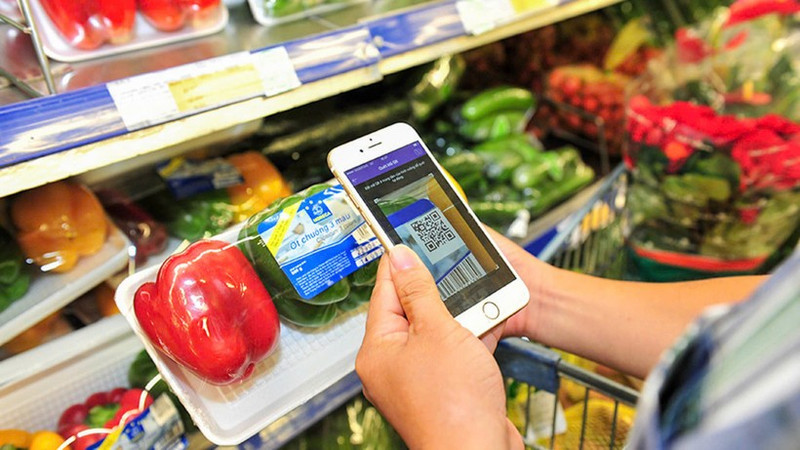Synchronous management of product origin
Codes and barcodes are regarded as the “identification card” of products, helping with origin traceability, supporting state management, and protecting consumer rights. However, some organisations and individuals are misusing codes and barcodes to legitimise products of unknown origin.

One of the common violations is that businesses and small-scale production facilities illegally use codes and barcodes of other businesses that have been legally registered. This makes it impossible for consumers to distinguish between real and fake goods by the naked eye or by simply scanning the code.
Another issue is products bearing codes or barcodes that are not registered in the national barcode database system (VNPC). When consumers or authorities scan these codes, no information is retrieved. This is often due to businesses failing to fulfil their obligation to declare product information or deliberately evading this responsibility to avoid traceability after being issued barcodes.
The market has also seen a rise in products with barcodes never issued by the authorised management agency in Viet Nam (GS1 Viet Nam), and which do not exist in any official data system. This is particularly common among goods sold online, hand-carried items of unclear origin, or illegally produced goods. More worryingly, some businesses deliberately create codes that resemble the structure of real codes to deceive consumers and the distribution system. Meanwhile, supermarkets and small retailers often only verify codes using internal software, without cross-checking with VNPC data, thus allowing counterfeit codes to exist.
A more sophisticated tactic is that domestic businesses use foreign-issued codes and barcodes without any authorisation or verification documents from the original owners abroad. In recent times, products such as imported milk, cosmetics, and premium supplements have been continuously discovered. A notable case included over 600 counterfeit milk products bearing American and Australian barcodes, distributed by a network of nine companies. These featured fake brands such as Cilonmum, Talacmum, Colos 24h Premium, Bold Milk, and Sure IQ Sure Gold.
Experts in barcode management field have warned that removing the requirement to authenticate foreign barcodes, as stipulated in Decree No. 13/2022/NĐ-CP, is paving the way for unauthorised codes to infiltrate the market.
Without proper verification and control, foreign barcodes may become “fake passports” that facilitate the entry of smuggled or counterfeit goods. In fact, many well-known imported milk brands have been counterfeited in Viet Nam. This cause difficult for authorities to handle without a basis to verify the original code. Therefore, in addition to authenticating foreign codes and barcodes, detailed guidance must be issued on the conditions for using such foreign codes and barcodes in domestic trade circulation.
Businesses granted product codes and barcodes must fully declare their product information on the VNPC system. At the same time, distribution units such as supermarkets and convenience stores should connect their sales software with this system to help verify product information and block goods of unknown origin.
Apart from traditional barcodes, there should enhance application of advanced authentication solutions such as electronic traceability, smart anti-counterfeit stamps, multi-layered security features, and real-time verification via smartphones. Each product should be assigned a unique, non-replicable identification code, which is linked to a central authentication database, enabling both consumers and distributors to verify product origins quickly.
Along with that, each consumer needs to be a critical “checkpoint” by being equipped with skills to verify product codes and use official traceability applications, rather than relying on common barcode scanners that are not connected to original databases. State management agencies must frequently inspect the market and combine data from VNPC to detect violations of codes and barcodes, while also clearly communicating with the public about the code and barcode standards and how to recognise violations.








